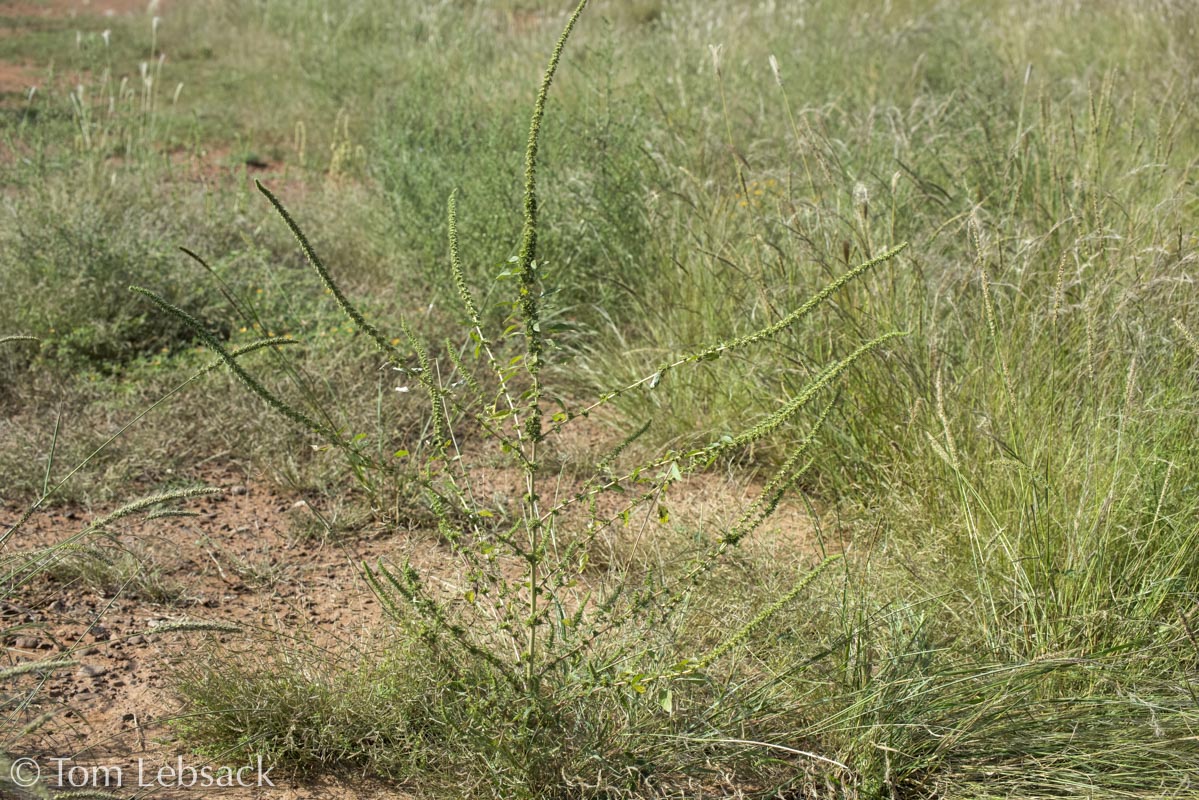Texas Wildbuds
Amaranthus palmeri
(Palmer’s Amaranth)
| Scientific Name | Amaranthus palmeri | USDA PLANTS Symbol | AMPA |
| Common Name | Palmer's Amaranth, Carelessweed | ITIS Taxonomic Serial No. | 20740 |
| Family | Amaranthaceae (Amaranth) | SEINet Reference |
Click Here |
| Description | Habitat: Various soils along streambanks, disturbed areas, farmlands, roadsides, railroads and waste areas; widespread, 330 to 3300 ft. Plant: Erect annual 2 to 5 feet tall, stems are green with purplish stripes, lower branches usually ascending; dioeceous (separate male and female plants). Leaves: Alternate leaves on long petioles (1.2 to 2.4 inches); lower leaves obovate or rhombic-obovate to elliptic with wedge-shaped base; uppeer leaves sometimes lanceolate; 0.6 to 2.75 inches long; margins are entire with a small point (mucronate) at the the tip. Inflorescence: Spikes of many small flower clusters; spikes are leafless, or nearly so, long, slender and drooping; also occasional small clusters of flowers in leaf axils; clusters comprising green and white, occasionally pink-tinged flowers, each cluster subtended by a bract; staminate flowers with 5 unequal spine-tipped tepals and 5 stamens; pistillate flowers with 5 unequal tepals and 2 or 3 spreading stigmas; bracts below staminate flowers equaling or longer than outer tepals and with long-pointed tip; bracts below pistillate flowers with midrib extending beyond the tip Bloom Period: August to November. References: SEINet, The Jepson Herbarium and Wildflower Search. |
BONAP Distribution Map Map Color Key Map Color Key | Texas Status: Native |
Banner photo of Castilleja indivisa and Lupinus ssp. taken along FM 1323 north of Johnson City, Blanco County
© Tom Lebsack 2025
Every attempt is made to provide accurate, up-to-date, and relevant information, but the completeness or accuracy of any information presented on this website cannot be guaranteed. I use authoritative references to insure high standards of accuracy and review and update the information frequently.




